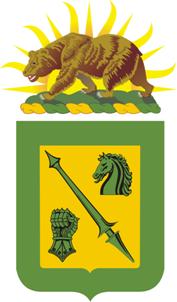Related Research Articles
The 308th Armored Cavalry Regiment was a Minnesota-based reconnaissance unit of the United States Army Organized Reserve Corps, which briefly existed after World War II. Its 1st Battalion traced its heritage back to a World War II Tank destroyer battalion.
The 305th Armored Cavalry Regiment was an Indiana-based reconnaissance unit of the United States Army Organized Reserve Corps, which briefly existed after World War II.

The 306th Armored Cavalry Regiment was a District of Columbia-based reconnaissance unit of the United States Army Organized Reserve Corps that briefly existed after World War II. The 306th ACR later became a group before being inactivated in 1959.
The 304th Armored Cavalry Regiment was a Massachusetts-based reconnaissance unit of the United States Army Organized Reserve Corps, which briefly existed after World War II. It was constituted in 1948 and partially organized from existing units before being inactivated in 1950 and disbanded in 1952.

The 303rd Armored Cavalry Regiment was a New York-based reconnaissance unit of the United States Army Organized Reserve Corps that briefly existed after World War II.
The 302nd Armored Cavalry Regiment was a New York-based reconnaissance unit of the United States Army Organized Reserve Corps, which briefly existed after World War II. Constituted in 1948, it was partially organized later that year and inactivated in 1950.

The 301st Cavalry Regiment was a cavalry unit of the United States Army during World War I and the interwar period. It was activated in early 1918 but broken up in the middle of the year to form new artillery units. The unit was recreated as a New York Organized Reserve unit during the interwar period, and was converted into a signal aircraft warning regiment after the United States entered World War II.
The 300th Armored Cavalry Regiment was a Texas-based reconnaissance unit of the United States Army Organized Reserve Corps, which briefly existed after World War II. It was constituted in 1948 and partially organized from existing units before being inactivated in 1950 and disbanded in 1952.
The 309th Armored Cavalry Regiment was a Michigan-based reconnaissance unit of the United States Army Organized Reserve Corps, which briefly existed after World War II.

The 310th Cavalry Regiment was a cavalry unit of the United States Army during World War I and the interwar period. It was activated in early 1918 but broken up later that year to form new artillery units. The unit was recreated as a Tennessee Organized Reserve unit during the interwar period, and later moved to Georgia in the early 1930s. It was disbanded after the United States entered World War II.
The 310th Armored Cavalry Regiment was a California-based reconnaissance unit of the United States Army Organized Reserve Corps, which briefly existed after World War II. It was constituted in 1948, partially organized from existing units in 1949, and inactivated in 1950.
The 311th Armored Cavalry Regiment was a Texas and Louisiana-based reconnaissance unit of the United States Army Organized Reserve Corps, which briefly existed after World War II. It was constituted in 1948, partially organized from existing units later that year, and inactivated in 1950.
The 314th Armored Cavalry Regiment was a Tennessee-based reconnaissance unit of the United States Army Organized Reserve Corps, which briefly existed after World War II. It was constituted in 1948, partially organized from existing units in 1949, and inactivated in 1950.
The 317th Armored Cavalry Regiment was an Illinois-based reconnaissance unit of the United States Army Organized Reserve Corps, which briefly existed after World War II. It was constituted in 1948, partially organized from existing units, and inactivated in 1950.
The 320th Armored Cavalry Regiment was an Ohio-based reconnaissance unit of the United States Army Organized Reserve Corps, which briefly existed after World War II. It was constituted in 1948, partially organized from existing units in 1949, and inactivated in 1950.
The 321st Armored Cavalry Regiment was a Virginia-based reconnaissance unit of the United States Army Organized Reserve Corps, which briefly existed after World War II. It was constituted in 1948, partially organized from existing units in 1949, and disbanded in 1952.

The 240th Cavalry was a United States Army parent cavalry regiment, represented in the Kentucky Army National Guard by Troop A, 240th Cavalry, part of the 149th Armored Brigade, stationed at Owensboro.

The 111th Armored Cavalry Regiment was a light armored cavalry regiment that was part of the California Army National Guard, briefly active during the early years of the Cold War.
References
Citations
- 1 2 Sawicki 1985, p. 345.
- ↑ "Georgia Sends Soil From Under Tank Treads For Ceremony Here" . The Gettysburg Times. 26 August 1954. Retrieved 20 July 2017– via Newspapers.com.
Bibliography
- Sawicki, James A. (1985). Cavalry regiments of the US Army. Dumfries, Virginia: Wyvern Publications. ISBN 9780960240463.